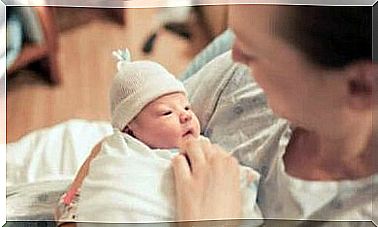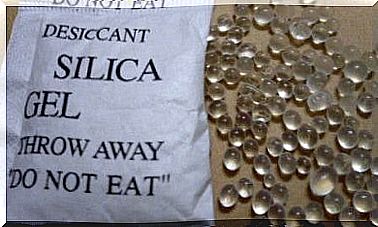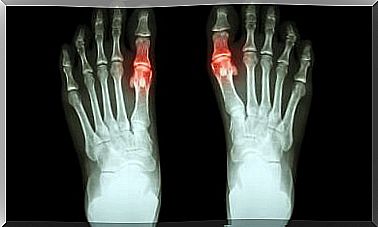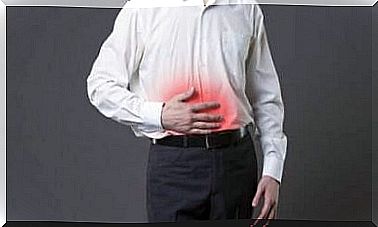Infection After Birth: A Risk For New Mothers
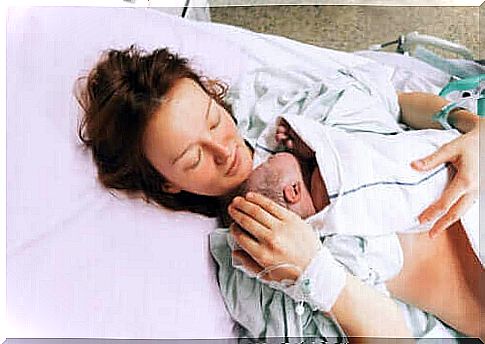
The reason for postpartum infection is that parasitic bacterial colonies or symbionts from the vaginal funnel infiltrate the internal tissues and spread as a result of stress during childbirth. If you want to know more about this serious medical condition, read on here.
Symptoms of infection after childbirth
Postpartum infection was common for years back. However, thanks to the effective use of antibiotics and disinfection of materials during childbirth , this condition is becoming more and more rare in the rich countries. Some signs of this condition are the following:
- Chills and a feeling of overwhelming discomfort.
- Pain in the lower abdomen.
- Smelly discharge from the vagina.
- Vaginal bleeding.
- Dizziness and fainting.
As indicated in the MSD manual, all of these clinical signs usually occur with intense fever (about 24-48 hours after birth), headache, and loss of appetite. In more severe cases, tachycardia, leukocytosis (increased concentration of white blood cells in the blood) and swelling of the walls of the pelvis can also occur.
Possible complications
Uncontrolled postpartum infection can cause microorganisms to colonize the blood and multiply in other organs. This is called bacteremia, which is a serious and life-threatening condition.
Blood poisoning is usually the immune response (equally uncontrolled) to the systemic infection. This leads to septic shock, causing death in 40% of cases.
Causes of infection after childbirth
Infections occur when bacteria from the vaginal funnel take advantage of the ability to infiltrate the mother’s wounds after birth. They tend to be polymicrobial, which means that several species are present. These include the following:
- Gram-positive cocci: Group B streptococci, group A streptococci (GAS), Staphylococcus epidermidis and Enterococcus species.
- Anaerobes: Grows in the absence of oxygen such as branches of the genus Bacteroides and Prevotella.
- Gram-negative bacteria: Gardnerella vaginalis, Escherichia coli, Klebsiella pneumoniae and Proteus mirabilis
Occurrence and risk factors
As studies on the PubMed portal indicate, in rich countries there are only 0.1-0.6 cases of postpartum infections per 1000 births. Globally, the estimates are much higher with 11 cases per 1000 births.
The likelihood of suffering from this clinical picture also depends a lot on the method of birth. The statistics are as follows:
- Vaginal birth: Incidence of 1-3%.
- Planned caesarean section: 5-15%
- Acute caesarean section: 15-20%.
This does not mean that an unplanned caesarean section will cause a birth infection in 1 in 5 births. By using a wide range of antibiotics, it is possible to prevent the overgrowth of bacterial colonies, even before serious clinical signs appear.
Risk factors include the following:
- Long birth.
- Complicated cesarean section.
- Postpartum hemorrhage.
- Bacterial vaginosis.
- Young age in the mother.
- Retention of placental fragments in the uterus.
Diagnosis
In general, it is an exclusion diagnosis. After the first 24 hours after birth, doctors should suspect a birth infection when there is no obvious cause of fever of more than 38 ° C in the mother for two days.
After ruling out other pathologies, doctors will perform a blood and urine culture to find out how far the bacteria have come. At the same time, it is rare to do an analysis of cervical samples, as doctors assume that it will be contaminated with microorganisms.
Treatment of infection after childbirth
The treatment of postpartum infections is based on intravenous injection of a wide range of antibiotics. These drugs are usually lindamycin and gentamicin – with or without ampicillin. As indicated by scientific studies, the intravenous approach is recommended until the mother no longer has a fever for 48 hours.
In the case of tissue remnants in the uterus, a scraping is performed to remove the remnants from the uterus. This prevents bacteria from multiplying again when the treatment with antibiotics is over.
Prevention
Prevention or minimization of predisposing factors for an infection is essential. According to the NSW Government Health portal , it is essential for the well-being of the mother to have proper hygiene during this sensitive period. Among the tips to follow, we have the following:
- Daily bath to keep the crust clean.
- Disinfect and dry the perineum area so that the bacteria from the rectum cannot spread to the vaginal area.
- Do not use tampons until approved by a physician.
- Wash hands with soap for at least 15 seconds before cash in with the genitals.
Postpartum infection is a geographical problem
Nowadays, postpartum infection is a problem that rarely causes cause for concern. If physicians perceive a risk of this happening, they make use of preventative antibiotic treatment, which reduces the likelihood of 75%.
Unfortunately, not all geographical areas can say the same thing. In countries with fewer public health structures, mortality from new mothers is much higher, as the lack of resources means that uncontrolled infections are much more frequent.

